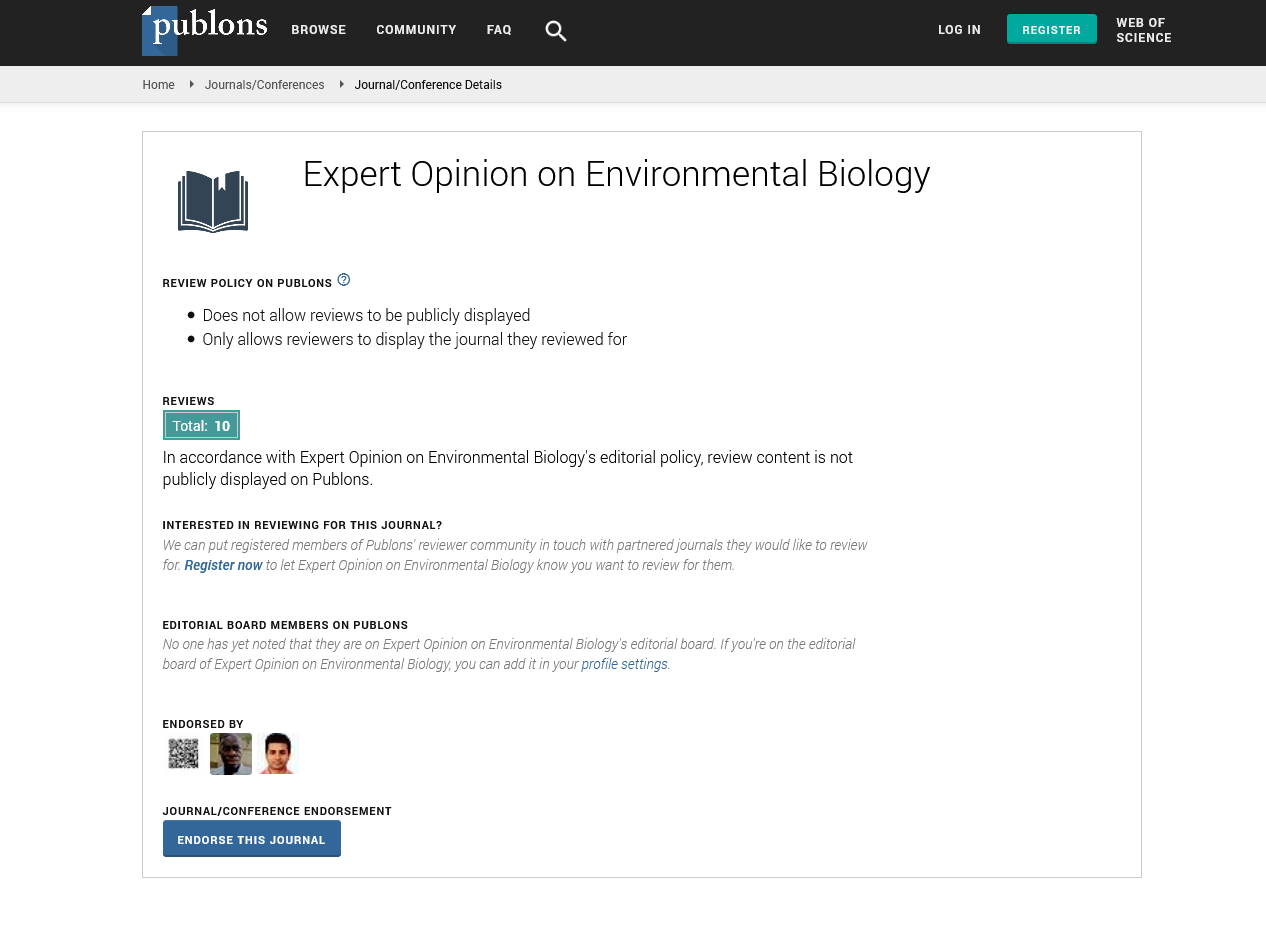Analysis of malaria dynamics in Odisha, India
Ruchi Singh, Prasanta Kumar Bal, Vaibhav Kumar and Saroj Kanta Mishra
Centre for Atmospheric Sciences-IIT Delhi, India
: Expert Opin Environ Biol
Abstract
Recently, India reported an increase in the incidence of vector-borne diseases. Concentrations of air pollutants are on rise due to human activities. Increased air temperature under global warming and local urbanization can lead to earlier pollen season and altered distribution of allergen and thereby leading to asthma. Weather also affects vector population dynamics and disease transmission with temperature and humidity considered as key variables. The impact of climate change on malaria reveals that the transmission windows (TWs) for malaria are predicted to increase with climate change. The authors assessed some of the impacts of environmental changes on water and air borne diseases in India. Among the entire major vector-borne diseases, malaria is still a major health problem in India. This study aimed to assess the regions and months in which climate is responsible for a remarkable interannual variability in malaria vector distribution, larvae density, entomological inoculation rate (EIR) and human biting rate (HBR) values in Odissa. However, there is no adequate information on the abundance of malaria and the influence of climatic factors on malaria transmission dynamics, incidences and distributions in Odisha on a local scale (district wise distributions). An idealized VECTRI model was run for 1951-2013 for mapping and modeling the distribution intensity and seasonality of malaria transmission through the Anopheles culicifacies, which is the most potent malaria vector in Odisha. Results indicated that the predicted values of average temperature, mosquito population, and biting rate have been increased in the last 63 years. Analysis for the recent period (2000 to 2013) showed that the malaria vector abundance is higher during the summer monsoon season (Jun’ to Sep’). The HBR and EIR are significantly higher over the Northern and Western parts of Odisha. Such information will be useful for the government administrators or policymakers to formulate suitable adaptation strategies by enhancing the accessibility to health services.
Biography
E-mail: ruchibiochem7@gmail.com
 Spanish
Spanish  Chinese
Chinese  Russian
Russian  German
German  French
French  Japanese
Japanese  Portuguese
Portuguese  Hindi
Hindi 
